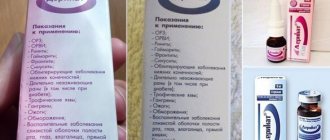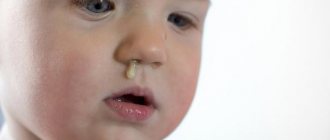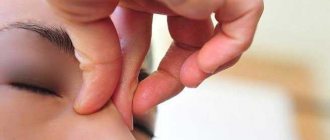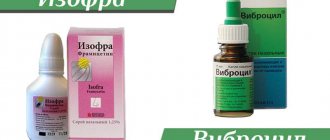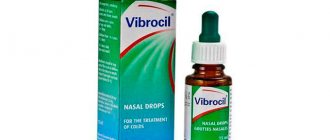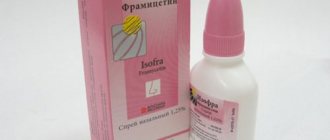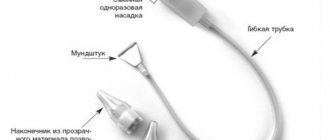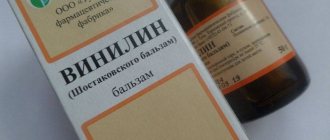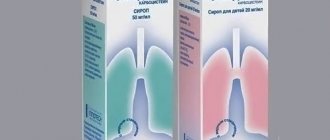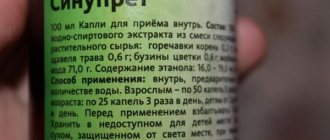Green snot in a child; treating it at home or on an outpatient basis requires identifying the reasons that caused the formation of mucus of this kind. Most often, green snot is a consequence of improper care for ARVI. If a child has a prolonged purulent runny nose, it is recommended to take a nasal swab for microflora testing.
The nasopharyngeal mucosa produces many different immune cells. Each type of cell has its own protective functions. During different infections, different types of cells come into play. So, for example, in case of allergies, eosinophils will be detected in a nasal smear, and in case of a viral infection, increased lymphocytes will be detected. In this case, the snot will be liquid and transparent. High neutrophil counts indicate a bacterial infection. Under the influence of white blood cells, bacteria break down into a substance that turns the mucus green. The greener the mucus, the more bacteria it contains.
What Causes Green Snot
What are the causes of green snot in a child?
- Mixed rhinitis. Most often, the onset of ARVI is accompanied by liquid, clear snot. This is a good sign, because protective cells are produced in the mucus, which prevent the virus from spreading to other ENT organs and the lower respiratory tract. After a few days, the mucus from a viral runny nose may thicken, and the protein environment creates favorable conditions for the growth of bacteria. Then a mixed type of infection develops - viral-bacterial rhinitis.
- Bacterial rhinitis. Develops with a bacterial infection, complications after ARVI. The most common of these is sinusitis. Inflammation of the paranasal sinuses may be accompanied by thick green or yellow nasal discharge. Often a bacterial infection occurs when a viral runny nose is treated with antibiotics, as paradoxical as it may sound.
With allergic rhinitis, the snot is usually clear and does not turn green or yellow over time. Read more about allergic rhinitis in children in our other article.
When can Derinat be prescribed?
Derinat is a drug with a fairly narrowly targeted effect. It is positioned as a remedy effective for:
- Viral runny nose (symptoms - copious discharge of clear snot, high body temperature, malaise, symptoms of acute respiratory viral infection) against the backdrop of a weakening of the body's defenses;
- Bacterial runny nose (symptoms are thick green snot, often with noticeable clots of pus), again, with weak immunity.
A typical picture of a bacterial rhinitis is thick snot with pus
All. These are the only cases when, even purely theoretically and only in accordance with legend, Derinat is able to help.
It is also useful to read: What drops can be given to infants for a runny nose?
In other cases - with allergic, vasomotor, traumatic rhinitis - Derinat will certainly be useless. And, as practice shows, only a doctor can reliably determine the type of runny nose.
This is interesting
The main area of application of Derinat is internal inflammatory diseases, in which Derinat is administered intramuscularly. Instillation of Derinat into the nose is one of the additional options for using the drug specifically against diseases of the upper respiratory tract.
It is noteworthy that Derinat has no obvious contraindications and does not cause side effects. In some cases, an allergy occurs to it, and in case of diabetes mellitus, sometimes the blood sugar level decreases in response to its intake. However, such cases are quite rare.
Review
“We had such a strange situation with this Derinat. My husband was injected with it for a peptic ulcer, I injected it for myself and my two children for a runny nose. Everyone is fine, but I get sprinkled with it immediately after, no matter in what quantities it is used. Such a strange effect. I have to be treated with other drops, and the doctor prescribes Derinat for everyone else. In general, we are completely satisfied with this remedy; children’s runny noses go away with it in two or three days, and ARVI does not even develop.”
Alexandra, Yakutsk
Video: Briefly about the properties and rules of use of Derinat
Principles of treatment
How to treat green snot in a child? For viral and bacterial rhinitis, the doctor will prescribe two important procedures that can be performed at home.
- Nasal rinsing. It is necessary to moisturize the mucous membranes and thin out thick green snot in a child. This will help prevent the mucus from drying out and spreading the infection to other organs. You can rinse your nose with pharmaceutical saline solutions or pharmaceutical antiseptics. The safest of this series of drugs is Miramistin. Decoctions of medicinal herbs will be effective: chamomile, calendula, oak bark, sage and others. However, when using them, you should be aware of possible allergic reactions. It is important that during rinsing the child thoroughly blows out the mucus and any remaining liquid.
- Treating the nasal passages with antiseptics. After rinsing and cleansing the nose, antiseptic drops are instilled. If you do the opposite, then antiseptics will not have a therapeutic effect. Treatment with Protargol drops is a classic in otolaryngology. "Protargol" is a silver solution that has anti-inflammatory and antimicrobial effects. However, silver is a toxic substance that can accumulate under the skin. Therefore, it is used strictly as prescribed by a doctor. Most often, these drops are prescribed for purulent runny noses that accompany various types of sinusitis. Antiseptic sprays can also be prescribed to treat green snot.
Green snot during ARVI can be prevented if you constantly humidify the air and give the child enough warm drinks.
What nasal medications can be prescribed
- Ointments and drops to soften the mucous membrane. These drugs help relieve dryness, irritation and itching of the mucous membranes, and “pierce” the nose. Typically, emollient ointments and drops are made on a plant basis with the addition of essential oils and menthol. Good reviews about Pinosol nasal spray. For green, thick snot, Pinosol thins out the viscous secretion well and facilitates the removal of mucus from the nose.
- Homeopathic remedies. They are prescribed for viral runny nose. Euphorbium Compositum drops, which help ease nasal breathing and relieve swelling of the nasal passages, are well tolerated by children of all ages.
- Means for strengthening local and general immunity. For ARVI, the doctor may prescribe immunomodulators, most often Derinat. Antiviral nasal drops based on interferon are also used: “Viferon”, “Grippferon” and others.
- Vasoconstrictors. Only in rare cases, with a viral runny nose, are vasoconstrictor nasal drops prescribed. Their use must be strictly dosed. Vibrocil is considered a mild-acting drug, which, in addition to the vasoconstrictor effect, has antihistamine properties.
Read more about cold drops for children in our other article.
Folk remedies
Treatment with folk remedies should be carried out under the supervision of a physician. It is important to remember age restrictions. For children under one year of age, it is generally not recommended to put any juices or medicinal decoctions into the nose (except for a weak dilution of chamomile and oak bark), and it is also prohibited to use ointments, hot inhalations, and foot baths. Children of any age may experience an allergic reaction to herbal infusions, bee products, juice of medicinal plants and vegetables. What folk remedies are considered the most effective?
- Kalanchoe and aloe juice. These products are considered light natural antibiotics and strong antiseptics. Helps well with green snot.
- Propolis drops. Only an aqueous solution should be used. Propolis containing alcohol will burn and dry out the nasal mucosa.
- Beetroot juice. Before use, dilute with boiled water in the following proportion: 1 part juice and 1 part water. It is also recommended to use diluted carrot juice as medicinal drops.
In case of bacterial rhinitis, steam inhalation is prohibited. This can worsen the condition and lead to bacterial infections of the upper and lower respiratory tract.
Treatment of bacterial rhinitis
If a child has a long runny nose with green snot, and a nasal swab reveals bacteria (usually staphylococcus and streptococcus), the doctor may prescribe antibacterial drugs.
- Antibiotics inside. They are prescribed for bacterial otitis media, sinusitis, and bronchitis. The most effective for staphylococcal and streptococcal lesions of the mucous membranes are penicillin antibiotics - Amoxin, Flemoxin Solutab, Augmentin, Amoxiclav and many others. However, children are often allergic to them, so the doctor may suggest antibacterial drugs from the group of macrolides and cephalosporins: Sumamed, Macropen, Azithromycin, Cefazolin and others.
- Local antibiotics. Used in the form of sprays and drops. The most commonly prescribed drugs are Bioparox, Sofradex, and Isofra. Polidexa is considered the most powerful local antibiotic; it is prescribed for prolonged purulent runny nose.
- Antiseptics. Rinsing and instillation with antiseptic solutions are prescribed as auxiliary therapy. The main treatment is antibacterial.
- Drops to thin the secretions in the nose. Effective for purulent sinusitis, they help free the paranasal sinuses from thick mucus.
Whatever the nature of the runny nose, it is not recommended for children of any age to drip a lot of drugs into the nose at once; this can lead to swelling and subsequently to allergic rhinitis.
How to cure green snot in a child? Green nasal discharge is not always treated with antibiotics. If the child feels well and does not have a fever or other symptoms of ARVI, he is advised to take walks in the fresh air. This is the best prevention, as well as a natural and safe “treatment” for green snot.
What should you do if your child develops green snot during a runny nose? Does this mean that a bacterial infection has occurred, or sinusitis has begun? Should I give my child antibiotics or can I use folk remedies?
When an adult has a runny nose, it is unpleasant. But a child’s runny nose is a headache not only for him, but also for his parents. Green snot in a child is of particular concern. We will now tell you why you shouldn’t panic and grab antibiotics.
A few things you need to know about “green snot” in a child:
- Green snot most often occurs due to a viral cold that cannot be treated with antibiotics.
- A healthy person's snot (nasal mucus) consists of water, proteins (mucins) and salt.
- Snot turns green after collecting dead viruses and bacteria, as well as white blood cells, which oxidize and change color over time.
Does green snot mean your baby needs antibiotics? According to experts, most likely not.
The survey showed that doctors often prescribe antibiotics for green or yellow mucus rather to be on the safe side, but at the same time, this is almost always not necessary.
Green snot on your baby doesn't mean you need antibiotics. Green snot in children appears due to a viral infection of the nasal mucosa - that is, with a common cold.
Antibiotics do not treat viral diseases. So, if the snot of a child with a runny nose has acquired a green tint due to an illness caused by a virus, there is no point in taking antibiotics.
Green or yellow nasal discharge in a child can be caused by a bacterial infection, but even so, unless the infection is severe, it is better to avoid antibiotics.
Overuse of antibiotics can cause bacteria to develop resistance to these medications, and the drugs may not be effective the next time you use them. It is also important to remember that antibiotics have various side effects, such as diarrhea or allergic reactions.
Why did my snot suddenly turn green?
This may surprise you, but snot has a very important function in the body - protective. The role of mucus is to maintain the integrity of the mucous membranes of the nose, mouth, throat and respiratory tract.
Snot traps unfamiliar material and keeps the airways moist. This is a natural part of our body. The reason why you produce more mucus when you are sick, for example, is because…. It seems to wash away foreign substances. As soon as some kind of inflammation occurs in the body, the mucus changes consistency. It collects foreign substances, bacteria and viruses, as well as inflamed white blood cells that have been produced to fight infection.
When there is an infection or allergy to something in the body, mucus also increases. Because of this, it constantly collects in the nose and throat.
If a child has an infection, the mucus “picks up residue from the battle between white blood cells and viruses or bacteria.” Since the mucus is inside, it allows the white cell components to oxidize since there is the presence of oxygen. This is the main reason for the color change.
A similar chemical reaction occurs when you cut into an apple and the white flesh turns brown as it oxidizes when exposed to oxygen in the air.
The longer the mucus lingers, the more discolored it becomes. It is a product of infection, inflammation and time.
The brown tint of snot indicates that there was blood on the mucous membrane, which was caked and turned brown, for example, when a vessel in the nose burst. But in any case, “multi-colored snot in a child” is not a cause for concern.
Now you know why green snot appears in children, and that this is absolutely no reason to immediately give your child antibiotics.
Last news:
Pregnancy and childbirth
From birth to one year
From 1 to 6 years
From 9 to 16 years
useful links
or login using:
or login using:
THANK YOU FOR REGISTERING!
An activation letter should be sent to the specified e-mail within a minute. Just follow the link provided and enjoy unlimited communication, convenient services and a pleasant atmosphere.
RULES FOR WORKING WITH THE SITE
I give my consent to the processing and use by the web portal UAUA.info (hereinafter referred to as the “Web Portal”) of my personal data, namely: first name, last name, specified dates of birth, country and city of residence, email address, IP address, cookies, information about registration on websites – social Internet networks (hereinafter referred to as “Personal Data”). I also give my consent to the processing and use by the Web portal of my Personal data taken from the websites I specified - social Internet networks (if indicated). The Personal Data provided by me can be used by the Web Portal solely for the purpose of my registration and identification on the Web Portal, as well as for the purpose of my use of the Web Portal’s services. I confirm that from the moment of my registration on the Web portal, I was notified of the purpose of collecting my Personal data and the inclusion of my Personal data in the personal database of users of the Web portal, with the rights provided for in Art. 8 of the Law of Ukraine “On the Protection of Personal Data”, read. I confirm that if it is necessary to receive this notification in written (documentary) form, I will send a corresponding letter to the address indicating my postal address.
A letter has been sent to the specified e-mail. To change your password, simply follow the link provided.
Nasal diseases are often accompanied by green snot, especially in childhood. This symptom is a signal of a bacterial infection. The discharge turns green when neutrophils destroy bacterial cells. To determine the causative agent of the disease, it is necessary to do a bacterial culture. Based on the data obtained, and also depending on the severity of the disease, the otolaryngologist may prescribe antibiotics for green snot. But in some cases, treatment with other drugs is possible.
When to take antibiotics
Taking antibiotics for green nasal discharge is not always necessary. However, there are situations when their use is necessary. Such cases include:
- confirmed bacterial infection accompanied by severe inflammation;
- green snot is accompanied by the discharge of pus.
Antibiotics are needed to prevent further spread of the disease and restore sterility to the sinuses. After all, nearby tissues are quickly involved in the inflammatory process, which is fraught with the development of serious complications.
Therefore, when green snot appears, you should not delay a visit to the doctor and self-medicate. Only a specialist can make a diagnosis and prescribe appropriate treatment.
Causes
If there is green discharge from the nose, it means that the child is experiencing bacterial growth in the sinuses. The causes of a protracted illness with similar complications include:
- advanced ARVI;
- newborns develop physiological rhinitis;
- purulent runny nose - thick green snot in a child may indicate the proliferation of pathogens (chlamydia, fungi, rhinoviruses, staphylococci and others);
- ethmoiditis is one of the complications of a runny nose, accompanied by pain in the bridge of the nose;
- sinusitis is the most dangerous complication, accompanied by pain in the sinuses, under the eyes, increased body temperature, and severe headaches;
- Frontal sinusitis is an inflammation of the frontal sinuses, which is accompanied by the discharge of pus into the throat and pain in the head and part of the forehead.
The danger of these diseases lies in the possible complication in the form of spread of the inflammatory process to nearby tissues. As a result, parents may see serious nosebleeds in their child and experience the development of bronchitis, pneumonia and meningitis.
Local antibiotics
It is antibiotics in the form of a nasal spray that are most often used for green snot. The most popular drugs are Isofra and Polydex.
- Isofra contains framycetin, which has antibacterial activity against the main pathogens of the nasopharynx. The spray is well tolerated and is approved for use from 1 year of age.
- Polydexa has a complex composition. The drug simultaneously contains 2 antibiotics (polymyxin and neomycin), a vasoconstrictor (phenylephrine) and a hormonal component (dexamethasone). Thus, the spray not only kills pathogenic bacteria, but also relieves inflammation, eliminates swelling, restores nasal breathing and promotes the free flow of snot.
- It is impossible not to mention Sulfacyl drops. They belong to sulfonamide drugs, but exhibit an antibacterial effect. The fact that the drops are intended for the eyes may be alarming, but they work well with green nasal discharge and have been used for this purpose for many years.
Features of use in children
In pediatrics, it is indicated for children with respiratory infections. The choice of doctors is explained by the safety of the drug and effectiveness. In a baby, the immune system is not yet functioning at full strength, and the medicinal solution gently stimulates and activates its work. A positive result is observed not only due to the negative impact on pathogenic microflora, but also due to the increase in local immunity.
Derinat for a child with a runny nose will achieve several goals:
- rapid neutralization of pathogenic bacteria, viruses,
- reducing the intensity of manifestations of rhinitis, due to the removal of swelling, reducing the production of mucus,
- restoration of the nasal mucosa,
- prevention of colds,
- preventing the addition of a bacterial infection, which often happens with prolonged green snot in babies,
Despite the safety of the drug, it must be prescribed by a doctor.
The dosage for children is established taking into account age:
- Children under 6 years of age are recommended to take the drug every 1.5-2 hours,
- from 6 to 12 years, the frequency of use is the same.
If you use Derinat for preventive purposes, the drug must be dripped 2-4 times a day.
It is important to remember that it is also available in the form of a spray, but this form is approved for use in children only after three years.
Systemic antibiotics
Green discharge alone does not warrant the prescription of oral antibiotics. Such medications are used only for serious bacterial diseases of the nasopharynx.
First-line drugs are penicillins. They are quite effective against most pathogens and are well tolerated. The most commonly used is Amoxicillin or its clavulanic acid-enhanced form:
If the effectiveness of penicillins is not enough, then a representative of the cephalosporin series is prescribed. These antibiotics are effective against a larger number of pathological microflora and are also quite well tolerated by patients. Their use is impossible if you are allergic to penicillin antibiotics due to the similarity of structure, which is the reason for the body’s identical reaction to their use. Representatives:
- Cephalexin,
- Ceftriaxone,
- Cefixime,
- Cefotaxime.
In case of intolerance to drugs from the first two groups or their ineffectiveness, macrolide antibiotics are prescribed. They exhibit a pronounced antibacterial effect against the most common pathogens of nasopharyngeal diseases. A characteristic feature of these drugs is the presence of moderate anti-inflammatory and immunomodulatory properties. Representatives:
In particularly difficult cases, drugs from the groups of fluoroquinolones, aminoglycosides, carbapenems and tetracyclines can be used.
Nasal rinsing
One of the most effective methods to quickly get rid of green snot is to rinse your nose. Thanks to this procedure, the nasal passages and sinuses are freed from secretions and pus accumulated there, as well as pathogenic bacteria. At the same time, nasal breathing is noticeably easier, swelling of the mucous membrane is eliminated and the effect of other medications is improved.
For rinsing, special saline solutions in the form of drops and sprays, physiological sodium chloride solution, or sea salt solution can be used. In addition, other nasal rinsing solutions are used that have antiseptic, anti-inflammatory, antimicrobial, regenerating and other properties. Examples of such drugs:
- Miramistin,
- Rotokan,
- Dioxidin,
- Furacilin,
- Chlorophyllipt.
Rules for using the product for children
Derinat is often used in pediatrics. In this case, again, the decision to use the drug is made exclusively by the attending physician.
It is also useful to read: Drops for colds with sea water
Interestingly, when treating a runny nose in infants, Derinat causes side effects less often than in adults. This is due to the fact that allergies occur much less frequently in young children, and this is also the main nuisance that the product itself causes.
Derinat for children for runny nose is prescribed in the form of drops.
To use Derinat on a baby you will have to buy a pipette
Vasoconstrictor drops
The use of vasoconstrictor drugs is necessary for severe swelling of the mucous membrane and nasal congestion. Such drugs can eliminate these symptoms, restore nasal breathing, facilitate the outflow of sinus contents and improve the effectiveness of other topical medications.
The choice of vasoconstrictor drops and sprays is extremely large. Any pharmacy offers dozens of names of such drugs, which allows you to choose the appropriate drug for each patient. Just before purchasing, you should consult your doctor. Possible purpose:
- Galazolina,
- Vibrocyla,
- Nazivina,
- Rinazolina,
- Otrivina,
- Tizina,
- Nazola et al.
Mucolytic agents
To get rid of mucus buildup and clear the sinuses of green mucus and pus, mucolytic agents may be prescribed. The most common use is Rinofluimucil spray. It has mucolytic, antioxidant, anti-inflammatory and vasoconstrictor effects. The spray is convenient because it practically does not enter the bloodstream and can be used from 2 years of age.
In more complex cases, it is possible to use mucolytics orally. Among such remedies, Sinupret is perhaps the most famous. This drug contains extracts from medicinal plants. It acts quite gently and effectively. In addition to mucolytic and secretolytic effects, Sinupret exhibits anti-inflammatory, immunostimulating and antiviral properties.
Antibiotics are used for bacterial, not viral infections. The bacterium or virus that causes the child’s illness, and whether this medicine is indicated in this case, is determined by the pediatrician.
Parents should be aware that using antibiotics when they are not indicated can be dangerous.
Here are answers to the most common questions parents have about antibiotics. If you have others, discuss them with your pediatrician.
1. The child has a severe runny nose. Why doesn't the doctor prescribe an antibiotic?
Antibiotics only help with bacterial infections. A runny nose, cough, and stuffy nose are in most cases symptoms of an acute respiratory viral infection (ARVI), and antibiotics have no effect on viruses. The child’s symptoms will go away without the use of any medications.
2. Why wait for bacterial complications of ARVI? It's better to start taking an antibiotic right away!
Prophylactic use of antibiotics for acute respiratory viral infections can lead to the development of infection caused by resistant bacteria. In addition, antibiotics, like other medications, have side effects. Contact your pediatrician if your child develops watery, bloody diarrhea or other side effects after taking an antibiotic.
3. Is green or yellow mucus a sign of a bacterial infection?
Sinusitis is an inflammation of the mucous membrane of the nose and paranasal sinuses. Sinusitis can be caused by a virus or allergy, and in some cases, bacteria.
The color of mucus during a runny nose can change from clear to yellow or green. Symptoms may persist for up to 10 days.
You can suspect bacterial sinusitis in a child if:
- green snot, cough and other symptoms do not go away for more than 10 days;
- green snot and temperature above 39 ° C rises within 3-4 days.
If bacterial sinusitis develops (which is rare), an antibiotic may actually be needed. Before prescribing it, the pediatrician will examine the child and do the necessary tests to make sure that the antibiotic is really needed.
4. Are antibiotics necessary for otitis media?
Not always. At least half of ear infections can resolve without antibiotics. If the child does not have a high fever or severe ear pain, the pediatrician will advise you to simply observe at the initial stage.
Ear pain is the first and most unpleasant symptom of otitis media. In this case, painkillers will help (remember that in children you can only use paracetamol or ibuprofen). Together with your doctor, calculate the dose of the drug, taking into account your age and weight . your child. In most cases, pain and fever go away within 1–2 days.
Ear drops with anesthetic can quickly relieve ear pain. Ask your pediatrician which ones are right for you.
The doctor may prescribe antibiotics if, despite the treatment, the child’s body temperature rises, ear pain increases, or, for example, bilateral otitis media.
5. Do you need antibiotics for a sore throat?
Not always. In 80% of cases, the cause of sore throat is viruses. If your child has a sore throat, a runny nose and a barking cough, then most likely it is a virus, and you won't even need a strep test.
Antibiotics are prescribed for the treatment of sore throat (acute pharyngitis, acute tonsillitis) caused by group A β-hemolytic streptococci. It usually occurs in school-age children, and practically does not occur in children under 3 years of age.
6. Do side effects often occur when taking antibiotics?
Side effects from taking antibiotics occur in 1 in 10 children. This could be a rash, nausea, diarrhea, abdominal pain, etc. Be sure to warn your pediatrician if your child has already had a reaction to an antibiotic.
Sometimes the rash does not appear immediately, but after the child takes the antibiotic for some time. However, not every rash is an allergic reaction. Seek medical attention if you experience hives (appearing like a nettle sting), itching, or rash. This allergic reaction must be recorded in the child’s medical record.
7. How quickly do antibiotics work?
In most cases of bacterial infections, the condition improves within 48 to 72 hours after taking an antibiotic. If your child gets worse or does not improve during this time, consult your pediatrician. If you stop taking antibiotics too early, the bacteria may not be killed and symptoms may return.
8. Can taking antibiotics lead to the development of resistant forms of bacteria?
Frequent use of antibiotics or use in cases where they are not indicated, as well as repeated courses, can lead to the development of antibiotic-resistant bacteria. These resistant forms of bacteria can spread among children and adults.
It is important to choose an antibiotic that is specific for a given infection (bacterium).
9. Are there drugs against viruses?
Antiviral drugs are used only to treat some viral infections. For example, for influenza, children from risk groups (bronchial asthma, diabetes mellitus, etc.) may be shown special antiviral drugs. At the same time, for most other viruses that cause runny nose, cough and other symptoms, there are no antiviral drugs with proven effectiveness.
10. How to use antibiotics safely?
- Antibiotics help against bacterial infections, but they have no effect on viruses and are not effective against colds.
- At the first symptoms of an acute respiratory infection in a child, do not rush with antibiotics; as a rule, they are not needed. Talk to your pediatrician about what you can do to improve your child's condition.
- Ask your pediatrician whether the prescribed antibiotic is indicated for your child's specific bacterial infection.
- Before taking, make sure you are giving the medicine exactly as written in the prescription.
- Do not give your child an antibiotic that you used last time or on another child - it is dangerous!
- Throw away unused antibiotics and do not leave them in the house. Some expired medications may be dangerous.
Green snot in a child is often accompanied by other symptoms and symbolizes the spread of the infectious process. The nose does not breathe, the child becomes capricious, and conventional medications may not help. To alleviate the condition and cure the disease, you need to establish the cause of its occurrence.
Antiviral agents
How to properly treat a runny nose? It is necessary to fight the cause of the disease – the virus. This task is accomplished by drugs containing interferon and other immunomodulatory substances. One of them is Derinat, produced in the form of drops and liquid for injection. In pediatrics, the first option is used.
The main component of Derinat is sodium deoxyribonucleate (2.5 mg/1 ml). Its action:
- mucosal regeneration
- reduction of inflammation
- stimulating cellular defense, thereby enhancing the immune response when fungi, viruses and bacteria enter the body
"Derinat" is prescribed for the prevention and treatment of diseases of the upper respiratory tract. The drug speeds up recovery and reduces the likelihood of complications.
Regimen for taking Derinat solution for acute respiratory infections:
- treatment on the first day - 2-3 drops in both nostrils with an interval of 1.5 hours
- therapy, starting from day 2 - 2-3 drops 3-4 times a day
- prevention – 2 drops 2-4 times a day
You can drip Derinat from the first days of life.
Other antiviral drugs for administration into the nose are “Nazoferon”, “Grippferon”, “Genferon-Lite”, “Leukocyte Interferon”. Their active substance (interferon) is characterized by antiviral and immunostimulating properties.
Medicines that contain synthetic (recombinant) rather than leukocyte interferon are considered safer. They are allowed to be used in newborn babies. Approximate dosage – 1 drop 5 times a day.
E.O. Komarovsky believes that the use of antiviral drugs for ARVI, including Derinat drops and products containing interferon, is justified if the baby’s immunity is very weakened.
Why does a child have green snot?
Cleansing the nasal mucosa from viruses and bacteria during a runny nose will take place in 7-10 days. What does green snot mean? If the snot does not go away after 2 weeks, changes color and smells bad, this means that a lot of pathogens have accumulated. An inflammatory focus has formed in the nasopharynx.
The main reason for what green snot means may be bacteria and viruses. As the infection spreads, not only the color of the mucus changes, but also the consistency. They become thicker.
At the beginning of ARVI, clear, profuse, liquid snot flows, an additional sore throat, a bothersome cough, and a rise in body temperature. It is better to start treatment immediately. If it was not done correctly, a bacterial infection may occur. The snot acquires a viscous consistency and changes color.
The reason that green discharge does not go away for a long time is due to diseases such as sinusitis, frequent nasopharyngitis or otitis media. Bacterial rhinitis with green snot develops due to bacteria or becomes a complication after ARVI. The causes of green snot in a child in this case are the following diseases:
- a prolonged runny nose can lead to ethmoiditis, which is accompanied by pain in the bridge of the nose, nasal congestion, increased body temperature, and the appearance of viscous, greenish-brown mucus;
- the spread of infection to the area of the maxillary sinuses causes sinusitis, accompanied by pain in the area between the eyebrows, in the upper part of the jaw, the wings of the nose, and purulent discharge appears;
- A green runny nose can cause sinusitis, which affects the frontal sinuses, the secreted snot smells bad, the baby becomes capricious, refuses milk and sleeps poorly.
When a cold appears, the immune system begins to actively fight bacteria and viruses, and mucus and pus begin to be released. Such nasal discharge contains dead leukocytes and bacteria, which is why the snot smells. If a small number of bacteria are present, the discharge may be light green in color. As they multiply, the viscous snot becomes a rich color.
When asked whether green snot in a child is contagious, the answer is yes.
Especially if there is a lot of mucus, their color is yellow-green and the body temperature is elevated. In this case, the reviews are as follows: “There is a high probability that the whole family will become infected and we will get sick together with the children.” If a child is not fully cured at the age of 2 and sent to kindergarten, he will be constantly sick.
Causes
It’s clear that you don’t need to run to the doctor with every child’s snot, but before you grab medications, you need to try to find out the reasons that caused such a symptom as a runny nose. Especially if it is prolonged.
It can be:
- hypothermia is a “classic” runny nose due to wet feet, which grandmothers love to scare. Although this is its most harmless form;
- viruses and bacteria - individually or together these are the most common pathogens of the common cold. Possible companions of infectious rhinitis are cough, sore throat, fever;
- allergens (house dust, cats and dogs, pollen...) or just very dry air. The nose is running, but there is no temperature, the general condition is normal;
- vasomotor disorders . For some reason, the nasal mucosa does not respond adequately to external stimuli. May be accompanied by headache, sleep and appetite disturbances.
Chronic rhinitis can be viral-bacterial, allergic, or vasomotor. Unless a stuffy nose due to hypothermia goes away as soon as the child warms up (in this case it is useful to float your feet). Well, if the symptom does not go away, it means that, taking advantage of the cold, an infection has entered the body, and the nasal cavity has come under its control.
How can you treat green snot in a child?
Green thick snot should be treated correctly from the first days so that the disease does not take a chronic course and cause complications. The use of vasoconstrictor drops is not recommended, especially in infants. If, nevertheless, the doctor decides to prescribe the medicine, then it should be instilled in the recommended dosage and no longer than three days.
If green snot appears in children, swelling and inflammation are noted in the nasal cavity, which interferes with normal breathing, the following medications may be prescribed.
- Protargol drops help a lot. They include silver ions, which relieve inflammation and disinfect the surface. A child at 3 weeks is allowed to instill the drug, but the duration of treatment is much shorter.
- Vibrocil helps cure green snot in a child. It simultaneously relieves inflammation and eliminates the symptoms of an allergic reaction. The swelling goes away, nasal breathing improves. Do not use in the treatment of runny nose in children under 5 years of age.
- Saline solutions help get rid of green snot, relieve nasal congestion, clear the passages of accumulated mucus, and eliminate dryness. You can use the medicine Aquamaris, Aqualor Baby.
- In cases where green discharge leads to the formation of crusts in the nose, Pinosol drops are indicated. They are contraindicated for children under 2 years of age.
- Thick snot in a 3-year-old child should be treated with drugs such as Sinupret, Sinuforte. They thin the mucus and promote its rapid release.
- Derinat drops help cope with viral and bacterial rhinitis in adults and children. They increase immunity, stop the proliferation of pathogenic microbes and are allowed from birth.
How to treat
Despite the difficulties with children's noses, proper prevention before the onset of a runny nose in children or proper treatment after will help avoid a protracted course of the disease.
Viral-bacterial runny nose
Drugs are common culprits in turning a viral-bacterial runny nose into a chronic one. Namely: antibiotics and vasoconstrictor drops.
Remember: Treating a runny nose with antibiotics is unacceptable! They are useless for fighting viruses, since the virus is too small for antibiotics to “find” it, and bacteria quickly develop resistance to topical drugs.
The consequence of their careless use will be “allergization” of the body and the fact that antibiotics will not work when they are really needed. Treatment of a runny nose with vasoconstrictor drugs is very popular because they quickly relieve all unpleasant symptoms and allow you to feel healthy for a while, and then you can put drops in your nose again. But these drugs have a lot of unpleasant side effects - from a negative effect on the heart to a protracted recovery process.
- Take note: tonsilgon for diseases of the nasopharynx
Under the influence of vasoconstrictors, the amount of mucus in the nose sharply decreases, and mucus is the main weapon of local immunity against the runny nose.
Such drugs must be used very carefully - strictly observing the dosage and in cases where the benefit from them really outweighs the harm. For example, in the complete absence of nasal breathing.
A long infectious runny nose occurs if a child, having barely gotten rid of one infection, immediately grabs a new one. In such a case, every effort should be made to:
- recover completely . While the treatment lasts, there is no need to visit an “infectious” group, go to the clinic, it is worth filtering the child’s contacts;
- When the disease is left behind, do your best to increase your immunity .
Folk remedies: mustard plasters
At the first stage, ordinary mustard plasters, widely used among people, will be of great help against prolonged rhinitis. They are very simple to use: moisten well in warm water, then place on the sick child’s chest and back, then wrap him in a woolen scarf or terry towel. The procedure lasts 10-20 minutes.
Using mustard plasters for the first time, it is better to limit yourself to 3-5 minutes, carefully monitoring possible allergic reactions - itching, burning. If they appear, such treatment cannot be continued.
When mustard plasters are tolerated normally, after the end of the session, the baby’s skin is lubricated with a cream, preferably a hypoallergenic one, and they immediately put on a warm sweater or, if it’s time to sleep, wrap the baby in a blanket.
To get rid of lingering weaving, the following folk method is used: mustard plasters are applied to the feet, wearing woolen socks on top. Keep the product on your feet for 1-2 hours. Having removed the mustard plasters, you need to put on the socks again and quickly walk around in them.
What you need to know when using mustard plasters as a folk method of treating children:
- The child's age must be over one year;
- For young children with delicate skin, it is better to place mustard plasters on the back side;
- the method cannot be used at elevated body temperatures;
- there should be no abrasions or rashes on the skin;
- The course of treatment for a runny nose consists of 10 daily procedures.
